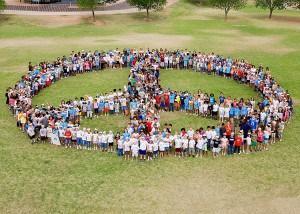 Are you pessimistic about peace? What do you know about peace innovation?
Are you pessimistic about peace? What do you know about peace innovation?
The last decades, has seen several changes in peacemaking efforts and civil society organisations, such as Centre for Humanitarian Dialogue and Internal Alert, are increasingly getting more involved in the peace process. Get few of us are aware of the innovations that are taking place. We are unaware of what peace makers are doing? And what sort of social innovations that may be beneficial for the peacemaking process.
There are many failures when it comes to securing peace and preventing atrocities, to mention just a few the failure of global activism, Save Darfur Coalition, to end the genocide in Darfur, and the civil war in Sri Lanka. The problems in Syria, highlights some of the problems that face nation-states and multilateral groups (including the United Nations) to end violent conflicts. Yet there are promising signs and also research that challenges many of our assumptions about war. The Human Security Research Report 2012, challenges ideas such as war destroys the education in the society.
- Education outcomes actually improve on average during wartime.
- Yet conflict-affected countries generally have substantially lower educational outcomes than nonconflict countries.
- But the lower educational outcomes are not because of war. The educational outcomes were low or lower during period of peace.
A recent example of attempts to ensure that children’s education are not disrupted due to violence can be see in Sudan. Here UNICEF has worked together with the local ministry of education and peacekeepers at the UN mission in South Sudan to make sure that students amid violence can complete their exams can be see in Sudan.
Today, an increasing number of conflicts is terminated by settlements and the majority of these negotiations have manged to prevent violence. Moreover, the death toll is dramatically reduced.
Peacemaking organisations often have expertise and knowledge and these combined with a moral authority has made it possible for them to fill the role where national governments and multilateral organisations have failed.

South Africa’s Journey
How would you describe Nelson Mandela’s contributions to the South African peace process? What specific contributions did he made? What strategies did he use to implement those strategies?
Nelson Mandela may be a prominent peace figure, yet many of us have difficulties describing what he did. His approach is often compared to Gandhi and Martin Luther King but this may not be an entirely accurate comparison.
“One of most interesting things he ever said to me was this idea of nonviolence. Remember, we compare him to Gandhi, we compare him to Martin Luther King. He said: “I was not like them. For them, nonviolence was a principle. For me, it was a tactic. And when the tactic wasn’t working, I reversed it and started” –that’s a very important difference.” Rick Stengel
South Africa’s journey from apartheid towards the creation of state built upon democratic values, included a wide range of peacemaking efforts:
- Official negotiations
- Multi-party initiative – CODESA (Convention for a Democratic South Africa)
- Regional bodies that emerged under the country’s National Peace Secretariat.
- Local peace committees that included South Africans of every racial and ethnic background, and from every sector of society
What is Peace and Peacemaking?
Peace is characterised by the lack of violence and freedom of fear of violence. Peace is often seen as something that is intangible yet a Global Peace Index has been developed to measure the peacefulness in different regions in the world.
Peacemaking is a practical approach to establish relationship that forestall future conflicts. A common used approach is to establish agreements on ethical decision between parties or within a community. New mutual agreements are formed and often facilitators or mediators are used.
As can be seen in the example of the peacemaking process in South Africa several layer in society can be involved in the creation and the formation of relationships that forestall conflicts. Peace innovation can take place in different areas:
- Peace in general
- Peace in families
- Peace in the workplace
- Peace between countries and people
Creative peacebuilding is an approach to create peace within individuals, groups and societies. The overall aim is to create an environment of lasting peace and methods such as music and visual art are used. For example, music therapy can be used a way to create harmony among individuals.
Creating an environment of lasting peace is the primary goal of peacebuilding. Eastern-Western Divan Orchestra is an attempt to create lasting peace within Israel, the Palestinian territories and Arab countries. The overall goal is to promote mutual reflection and understanding by engaging young musicians in music making.
Peace Dot
The Peace Dot is an initiative made Stanford Peace Innovation Lab. The idea is to provide a place where organisations working towards peace can share their ideas. The directory includes a wide range of approaches towards peacemaking such as Couchsurfing, where the aim is to encourage people to open their eyes for other cultures to Khan Academy where students all over the world can receive free education.
Couchsurfing is an attempt to promote peace by connecting people to a global community of travelers. You can use Couchsurfing to find a place to stay or share your home and hometown with travelers. The Khan Academy tries to promote peace by ensuring that children and students all over the world has access to education. During period of peace educational outcomes were low or lower in conflict-affected countries. Thus, providing education is a way to promote peace.
Peace innovators explore ideas like:
- How to use technology to target human violence?
- How to reduce negative communication by using technology?
- How do you promote positive communication?
- Can Facebook social games be used to teach non-violent communication?
- Can mobile iPhone Apps teach children anti-bullying interventions?
- Designing solutions for civil engagement.
- Ways to measure peace – How do you measure peace between countries, within a country, and between people?
Thus, today there is an attempt to prevent conflicts by developing innovations that can promote positive communication and help to build relationship between people and communities. There are also attempts to introduce innovation into diplomacy, which is a traditional and hierarchical profession. For example, ideas such as online negotiations and ways to engage small and developing states in global policy processes are explored.
It might seem naive to suggest that human conflict can be solved by better communication and more knowledge of other cultures. Many conflict originate from different interests (water, oil, food), or people who do not adhere to generally accepted standards and laws. However, peace processes in for example South Africa suggests that a wide range of methods may help a peace process. Breaking down barriers and providing food, water and education to everyone is a start.

Photo:”Spheres Balance” by Danilo Rizzuti, Wrangler News, “White Dove” by Victor Habbick
